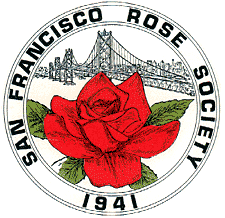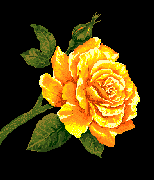JANUARY:
PRUNE. PLANT bare-root roses. Prune roses at their dormant stage, usually about the middle
of the month. The aim is to renew the plant by removing very old growth cleanly at the base,
leaving no stubs. Dead and twiggy branches are eliminated and branches crossing the center
of the bush are removed. The remaining canes are cut back, always to a lateral which is then
shortened back to an eye pointing to the outside of the bush. This is also the ideal time to
plant bare-root roses. Plant in the sunniest spot in the garden, protected from the prevailing
winds, in well-drained soil.
FEBRUARY:
Apply a top dressing or organic compost, fir bark or steer manure. As leaf buds begin to break
rub off any that will grow into the center of the bush. Continue to do this throughout the
growing season. Scatter snail bait around the garden.
MARCH:
Supplement the rain with generous irrigation, using a water wand. Control aphids by spraying
with a recommended insecticide. Lightly cultivate the soil as soon as it is friable after
a rain.
APRIL:
Apply a complete commercial fertilizer, 6-9-6 or similar proportions. Scratch it lightly into
the soil and water immediately. Start a preventative fungicide spray program to protect the
roses against rust and mildew. Follow spraying and fertilizing recommendations of your local
nurseryman or Rose Society.
MAY:
Time to fertilize with a ground application or foliar feeding. Use a balanced fertilizer.
Grandular fertilizers are superior to foliar fertilizers. This is the month of Roses. Enjoy
them in the garden or cut them for indoor decoration. Always cut with sharp shears to a vigorous
set of leaves pointing to the outside of the bush. Maintain your watering and spraying
schedule
JUNE:
Basal shoots make their appearance. Learn to differentiate between "good growth" and
"suckers." The latter start below the graft union, below the soil surface, and should
be pulled off, not cut. "Good growth" starts from above the graft and will be your
future bush if properly treated. When about 16" long, pinch out the top. This will encourage
it to branch out. Maintain watering.
JULY:
Second Rose bloom appears. Fertilize lightly early in July. Cut all blooms before the petals
drop and keep the soil clean of spent leaves and petals. Water as needed to keep up the
spraying program.
[Additional information: See articles on Blackspot and Rust. ]
AUGUST:
Continue watering by irrigating deeply.
SEPTEMBER:
Cut down on fertilizing. The grower may use a 0-10-10 fertilizer or it is best to just stop
fertilizing entirely for the balance of the Rose season. Maintain watering and spraying
schedule. Prepare the soil for future plantings by digging deeply and adding humus: bone meal
alfalfa meal, and peat moss.
[Additional information: See article, "The Fall Season in Your Rose Garden".]
OCTOBER:
Enjoy the last mass display of Roses and maintain a watering schedule.
NOVEMBER:
Keep the garden clean of spent petals and leaves. Water if needed.
DECEMBER:
Select roses to be planted in January. Use Rose catalogs and consult the local Rose Society
Rosarians. Dream about next year's rose garden.
|
 Rose Society's
Rose Society's
 Rose Society's
Rose Society's

 The Fall Season
The Fall Season








